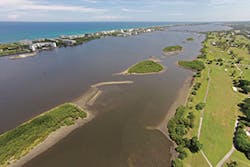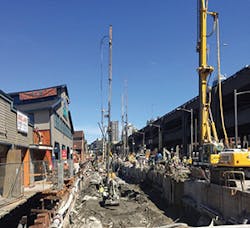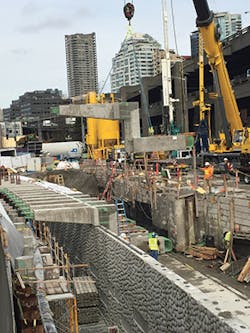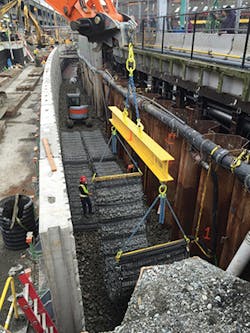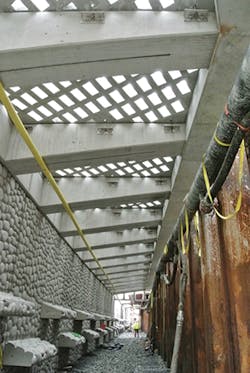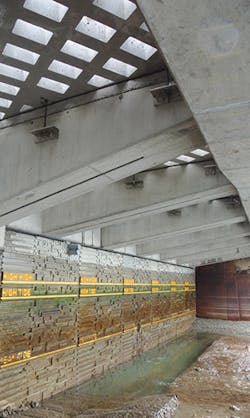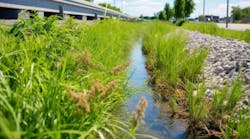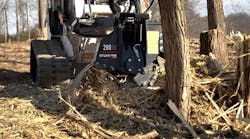The coastal environment constantly ebbs, flows, and shifts. Its dynamic, ever-changing properties provide one of the most habitat-rich ecosystems on the planet and a critical buffer between the ocean and mainland. Frequently, the coast also experiences conflicting human and natural processes; the National Centers for Coastal Ocean Science notes that by 2100, 33% of US shorelines will be hardened by seawalls and bulkheads. However, learning from past conflicts between human desire and coastal processes can help turn the tide on the treatment of shorelines.
Dramatic events including hurricanes, oil spills, and water pollution occasionally remind us that the coasts have many benefits beyond simple habitat and human industry. They protect against storm surges, sea level rise, and king tides. Every year, many shoreline projects attempt to merge an understanding of coastal processes and applied engineering design to find stabilization and protection solutions that satisfy both natural and human demands.
Stemming the Delta Tide
The Coastal Wetlands Planning, Protection, and Restoration Act (CWPPRA) has benefited roughly 100,000 acres through more than 200 coastal protection and restoration projects in Louisiana since its 1990 enactment. Directed by a task force of five federal agencies—the US Army Corps of Engineers, Environmental Protection Agency, Fish and Wildlife Service, Natural Resources Conservation Service, and National Marine Fisheries Service—and the State of Louisiana, CWPPRA targets shoreline improvement projects with the highest likelihood of success, greatest resulting benefits, and efficient budgets. Hence, selected projects typically employ proven techniques and materials like basic riprap, even though the projects have diverse goals ranging from oyster reef restoration to plugging navigational canal banks.
W. Britt Paul, assistant state conservationist with the Natural Resources Conservation Service and a CWPPRA task force member, explains that using riprap comes with complications. “There are several places around the state where the soils will support rock, and it’s both the cheapest and longest lasting for shoreline protection,” says Paul. “However, there are areas, including in the deltaic plane, where the soils just aren’t strong enough.” To lighten the load, sometimes a lightweight, kiln-fired aggregate serves as a substitute, but its expense can negate its effectiveness in many large-scale applications.
The limited existence of lighter, similar-cost materials has prompted the task force to employ demonstration projects to test multiple proposed alternatives in a single implementation area. The most recent demonstration recently wrapped up its three-year monitoring period this past July—evaluating four products new to the CWPPRA program at a Shark Island location. Currently under compilation, results from this demonstration will add to the running list of past-trialed materials, which includes various shapes, sizes, and configurations of precast concrete, HDPE, Styrofoam, and mixed materials used for breakwaters, shoreline stabilization, oyster reef restoration, marsh creation, and vegetation planting.
Paul says many demonstration products can look odd at first. “Sometimes they really stick out when you first put them out there, but they eventually blend in with mold growing on and plants growing around.” He notes that these demonstrations have yielded a few other go-to products for the CWPPRA toolbox, but most do not make the cut, primarily due to cost. “I don’t think we’ve got a top two or three options that will replace rock with the same longevity for a reasonable cost, so we continue to look for alternatives.”
Paul also reminds that coastal areas demand flexibility. “We’ve been doing this a long time and have found it’s very site specific. Right now, our go-to in poor soil conditions is the [kiln-fired aggregate], but we still have issues with that occasionally. Something that works in one spot may have issues elsewhere.”
Demonstrations aside, CWPPRA projects target fixing man-made disruptions in the coastline, including eroded banks or openings in navigation canals that allow saltwater to intrude into freshwater wetlands, or freshwater wetlands that are subsiding because of interruption of river-floodplain sediment dynamics. “We plug the gaps in canal banks or put structures on them to protect the shorelines. In the delta, we dredge river sediments and rebuild wetlands lost to sea level rise. It’s a balancing act to get the sediment you have to where you both want and need it the most.”
The results of one effort surprised him. Not well received by the community, the barrier island project moved forward by placing protective rock breaks. Sediment transport studies indicated adequate volumes to be successful and not disrupt downstream dynamics. “We placed the rocks and almost immediately trapped sand. Barrier islands typically roll back on themselves and erode. These rock break waters help this island to maintain itself and stay in its location.”
CWPPRA projects may be submitted by any entity including task force agencies, the state of Louisiana, local governments, and private landowners. Each submittal undergoes a task force review in a two-year process: initial concept-level cost-benefit review and analysis within the project’s CWPPRA-designated region, and later a full task force review and analysis of its engineering design and budget in comparison with other project candidates.
“Early on, just about every project that was prepared correctly was funded and implemented,” says Paul. “But gradually, we had more projects ready than we had funds, so the competition got stronger and a backlog formed.” As federal and state budgets fluctuate, the amount of implementation varies. If the task force finds it has too many projects competing for too few funds, it may kick some projects over to other programs where they can be more successful. “We all have the same goals and are trying to get as much on the ground as possible,” he says.
Paul doesn’t see a time when the program runs out of projects. “There’s still so much need out there for shoreline restoration and protection across the coast. It’s a vast wetland complex with complex issues.” He believes there is a broad array of efforts that can and should be done because they have worthwhile benefits for the coastal ecosystem, and he likes the idea that one day there may be a CWPPRA-based effort to consolidate the collective knowledge, experiences, and recommendations of the task force agencies.
Restoring a Subtropical Lagoon
Palm Beach County’s Department of Environmental Resources Management has been implementing habitat creation and restoration projects on county-owned properties within the Lake Worth Lagoon for more than two decades. The projects have returned hundreds of acres of oyster reefs, mangrove fringes, seagrass beds, and public recreational opportunities to the highly urbanized lagoon. The latest project, Jewell Cove at Old Bridge Park, removed invasive vegetation, placed sand to stop shoreline erosion, planted native maritime hammock vegetation, and installed a 700-foot limestone rock reef for temporary protection and long-term habitat. “Our primary goal is habitat restoration, but shoreline protection is a side benefit,” says Carman Vare, environmental program supervisor with the department.
Originally a freshwater lake, the 20-mile-long Lake Worth Lagoon eventually turned to saltwater through a series of dredging projects to make navigational connections to the Loxahatchee River and Atlantic Ocean through two inlets. “Before people moved in, the whole lagoon had natural shorelines with plenty of habitat,” says Vare. “Over the years, the habitats eroded, and now it’s kind of a big bathtub.” This transition to saltwater and urban development turned mangrove-lined shores to seawalls and piers; freshwater wetlands faded to barren saltwater flats, and dredging for boat navigation and upland fill made deep anoxic waters depleted of dissolved oxygen. “We’re not trying to restore the entire lagoon, but we want to get closer to its original condition with areas of habitat for birds and fisheries,” says Vare.
The Snook Islands restoration
Several anoxic areas have been remedied by the county through restoration projects. One of the largest, Snook Islands, used 1.2 million cubic yards of sand to fill deep holes along 1.2 miles of the lagoon. Completed in 2005, the project protected and restored more than 100 acres of oyster reefs, sub-tidal seagrass flats, saltmarsh, and mangrove areas on four newly created islands and adjacent mainland shoreline. “It’s performed better than we anticipated,” says Vare. “We designed a few acres of appropriate elevations to recruit sea grasses, but the endangered Johnson’s sea grass is now a prominent species there, covering over 45 acres of the project.”
Dave Carson, also with the Department of Environmental Resources Management, served as project designer and manager of the Snook Islands construction. Vare says Carson enthusiastically advocated for the project and saw it through to successful completion, which also meant that reconstruction of the failing mainland seawall was avoided. In the end, though, a bird demonstrates how successful the project has become. “We had a mated pair of [American] oystercatchers show up during the construction,” says Vare. “No pairs in the area had successfully fledged out a chick for some time, but they did and have come back every year since. Now some of their offspring return, and we have three to four nests every year fledging one or two each.”
Having installed many restoration projects, Vare feels he and his team at Palm Beach County have zeroed in on techniques that work. “We have a recipe that works,” he says. The recipe typically includes installation of protective rock berms just waterward of the restoration areas to guard against wave action. As part of the Intracoastal Waterway, the lagoon experiences heavy boat traffic and extended periods of east-northeast winds in the winter.
Vare explains that the department used to consider the rock berms temporary, removing them after the planted vegetation secured the restored area. “However, we discovered that oysters attach to the rock and filter feeders live within it, and so it transforms from protection to habitat. Now we typically leave it.”
The concrete slab is poured in sections along the length of the project and will use more than 13,750 cubic yards of concrete.
For that reason, Vare and the department have also installed rock berms directly adjacent to publicly owned seawalls experiencing erosion, and also recommend the practice for private properties. Because they do not mitigate wave action, seawalls can actually promote erosion at their base due to scouring of waves, and eventually, the wall becomes undermined. The rock buffers incoming wave action and gradually provides marine habitat, especially when topped with soil and native vegetation.
Over the years, the Environmental Resources Management team has adjusted their restoration recipe, perfecting their success: adjusting the height of the protective rock berms, locations of proposed habitats, elevations of planted species, and post-construction maintenance. “After we built Snook Islands, the public embraced the project,” says Vare. “It became the poster child for these restoration projects. With its success, the public and funding agencies are more likely to support similar projects in other areas [of Palm Beach County].” In fact, Vare reports that two additional projects are moving through the design phase now.
installation.
Securing Downtown Seattle
Under the water’s edge where Seattle’s downtown skyscrapers crowd Elliot Bay lies a recreated northwest passage under the shadow of a recently installed seawall. Sunlight streams into the water, illuminating anemones and eelgrass growing on the floor of a rock gabion tidal shelf. Salmon and crabs cruise the restored shallows with the ebb and flow of the water, with a backdrop of starfish and urchins clinging to the seawall’s textured concrete face. Meanwhile, pedestrians stroll along the cantilevered walkway above, visible to their marine neighbors only by the shadows they cast across the scene.
The massive Waterfront Seattle Program combines rehabilitation of the city’s aging and seismically deficient seawall with improvements to public waterfront access, the adjacent road, and ferry transportation network, as well as restoration of tidal habitat. Constructed between 1916 and 1934, Seattle’s original seawall stood on roughly 20,000 old-growth timbers distributed along its 7,000-foot length. In the 80 or more years since it was built, marine conditions and the persistent gribble—a diminutive crustacean that infiltrates wood exposed to saltwater—had reduced sections of the seawall to sawdust and indirectly exposed the shoreline to tidal erosion.
were not well documented.
Further, the historical construction hadn’t considered seismic reinforcement, a point dramatically made by the magnitude 6.8 Nisqually earthquake in 2001 that caused the adjacent Alaskan Way Viaduct to settle several inches. “The seawall project combines both maintenance of the waterfront to protect the shoreline and to meet the current seismic code,” says Lorelei Williams, director of Capital Projects and Roadway Structures Division for the Seattle Department of Transportation.
After years of planning, design, public meetings, property acquisition, and construction, the seawall project began by securing the site against waters from Elliot Bay and from landward groundwater. “We installed over 1,000 steel sheets on the waterside to close out the bay and used a soil freeze wall on [city] side to isolate all the water coming from uphill,” says Williams. The soil freeze system uses a chilled saltwater solution that circulates through pipes installed vertically along the length of the planned excavation zone. “They look like little popsicles from the top.”
After roughly three weeks, the chilled saltwater cooled the subgrade sufficiently to freeze any groundwater, making site dewatering unnecessary. “We originally planned for a dewatering system, but had many initial challenges. With the soil freeze, the only water we had to manage was what fell on the site.” Williams explains that the switch from traditional dewatering to soil freeze technology caused a sizable construction budget increase, but its predictability and minimal or no effects on surrounding groundwater made it worthwhile. “It turned out to be a great solution for our project. It took away a lot of the unknowns and risk.”
Marine mattresses are installed in front of the seawall face to create a more favorable substrate for habitat growth and a shallowwater
corridor for migrating fish.
Efficient site management helped with the first phase of seawall construction—installation of the subgrade jet grout system. Grout was injected into thousands of holes from 80 to 120 feet deep that had been drilled in a grid along the shoreline. The grout mixed with soils to stabilize the subsurface and protect both the seawall and shoreline from potential future earthquakes. “The primary stability and structural elements of the wall are based on these jet grout columns,” says Williams. The columns support a layering of concrete components including a massive 13,750-cubic-yard base slab, roughly 390 Z-panels (named for their precast shape), textured face panels, and sidewalk panels each containing 63 light-penetrating glass blocks. (For more detail on the precast panels from Oldcastle Precast, see the article “Beauty With Purpose: Retaining walls make their mark” in our September/October issue.)
Instead of opting for a traditional secant seawall, the project team’s structural engineers designed the Z-panels to support the wall face and an upper cantilevered walkway that promotes marine habitat underneath. Each panel weighs approximately 44,000 pounds and was trucked in from a precasting facility offsite. “By having the cantilever, the Z structure exposes the water and habitat bench to daylight,” says Williams. “They hold back the seawall and create habitat space where the old wall was before.”
In the Puget Sound, marine habitat has become sacred in recent decades as the region rushes to help its struggling salmonid species. Early on, the seawall project design team realized that cost-effectively restoring shoreline habitat meant creating a custom structure. “The secant was a challenge because it would have to be beefed up quite a bit to get the support necessary for a cantilever. It’s not that you can’t do it with a secant; it just starts to be financially prohibitive.”
seawall looks like little more than a new sidewalk, but there are many elements hidden below the surface that provide structural stability and habitat enhancement.
The cantilever design with light-penetrating panels offers a well-lit protected area where marine life can shelter and thrive, but these panels provide the main structure only of the tidal nook. Marine mattresses, made from plastic mesh filled with a mix of rock sizes, elevate the bottom surface, making it perfect for colonization by marine life that prefer living at the tidal edge, intermittently inundated and exposed. Williams says the raised bottom also narrows the height of the passageway under the sidewalk panels, creating an attractive, lit passage for fish to travel.
The seawall face panels have three different textured surfaces: cobblestone, geometrical shapes with tide stage marks, and a marine life collage. “The different textures promote [more surfaces for] marine life growth and are part of a 10-year study to evaluate which surfaces are most effective in producing habitat,” says Williams. Each face panel weighs 18,000 pounds and in some areas had to be installed at low tide, which sometimes meant in the middle of the night. “Already within six months of building sections, we’ve seen algae and crabs arrive.”
Williams says the massive project wasn’t without complications, though. “We had some movement of the steel sheets when they were first installed, which caused us to tie them back to a system that holds them in place. We thought once installed, they would stay.” The construction team also had trouble finding a disposal site for wastes produced from the jet grouting installation. “We had originally hoped to find a city property for disposal of the high-pH wastes, but instead had to transport them to a special facility, which increased our project costs.”
At the minimum, constructing such an ambitious project within a city center offers its own unique hurdles. “We had businesses and pier owners in the area that had to live through construction, and it was a continual effort to work with them.” The project opted to shut down businesses and access to the area for a nine-month period because it was easier and cheaper than to maintain access. “Even when we opened everything back up, we still had access bridges and traffic-flow management. Making sure their access was sufficient was challenging.”
Conclusion
The goals of shoreline projects can be as diverse and complex as their underlying coastal processes. Each restoration, stabilization, and protection project can help preserve this valuable resource and inspire continued efforts. “I felt that [the seawall project] is a once-in-a-lifetime type of project,” says Williams, who thinks the lessons learned and techniques perfected in the seawall and Waterfront Seattle projects will influence future Elliot Bay shoreline work.
Any worthwhile project has its challenges. Unfortunately, these challenges can be more significant along the coast where both natural and human elements frequently collide. “It’s hard to build in a place that definitely needs it where there are so many people and activities going on,” says Williams. “It can be painful.” Such work demands perseverance and strong teamwork. “One of the most amazing things I’ve seen is five federal agencies and one state government working together for 26 years to implement as many projects as they have,” says Paul.
